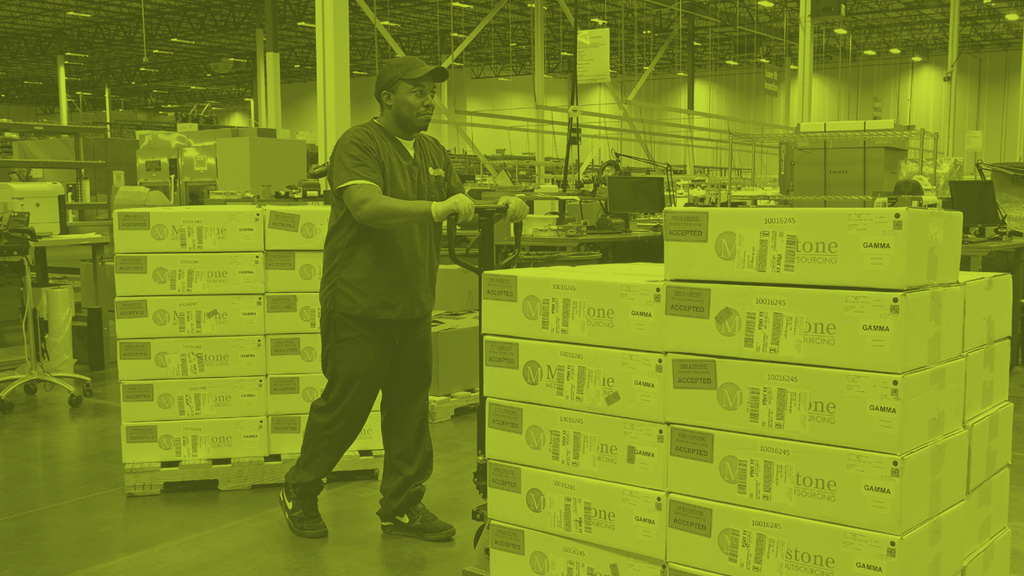Key Takeaways:
- Hidden bottlenecks in medical device distribution can lead to delays and higher costs.
- Integrating packaging and distribution simplifies workflows and shortens lead times.
- Strategic placement of warehouses enhances shipping speed and ensures regulatory compliance.
The Importance of Faster Logistics in Medical Device Distribution
In the highly regulated world of medical device manufacturing, time is of the essence. Original Equipment Manufacturers (OEMs) must navigate strict compliance requirements while ensuring products reach the market quickly and safely. However, logistical bottlenecks—such as fragmented distribution networks, inefficient packaging workflows, and poor warehouse placement—can significantly slow delivery times and disrupt patient care.
Optimizing logistics for medical devices involves more than improving speed; it is about creating a seamless, compliant, and cost-effective supply chain. This article examines the main challenges OEMs face in distribution and explores strategies for reducing lead times while maintaining product quality.

Hidden Bottlenecks Slowing Down Medical Device Distribution
Many medical OEMs face shipping delays and increased costs due to inefficiencies in their logistics operations. Some of the most common bottlenecks include:
1. Fragmented Packaging and Distribution Processes
When separate vendors manage packaging and distribution, OEMs encounter unnecessary handoffs, increased risks of delays, and inconsistencies in compliance documentation. A lack of integration between these processes leads to:
- Longer lead times due to additional coordination efforts.
- Limited supply chain visibility, making it harder to track shipments and proactively address delays.
- Increased costs associated with managing multiple vendors.
2. Poor Warehouse Placement
Shipping medical devices from poorly positioned warehouses can result in unnecessary transit time and increased costs. Many OEMs inadvertently store products in locations distant from significant shipping hubs, which results in the following:
- Extended shipping times for both domestic and international deliveries.
- Higher freight expenses due to non-optimized shipping routes.
- Regulatory risks if storage conditions do not comply with FDA and EU MDR standards.
3. Limited Shipment Visibility and Coordination
Many medical device OEMs lack full visibility into their distribution networks, leading to delays and compliance challenges. Without a logistics partner that provides proactive tracking and hands-on shipment management, OEMs may face:
- Unclear shipment status, making it difficult to anticipate and resolve delays.
- Disruptions in transit without timely updates or intervention to prevent issues.
- Misalignment in shipping documentation, increasing the risk of customs or regulatory delays.

How an Integrated Packaging and Distribution Approach Reduces Lead Times
To streamline operations and minimize lead times, medical device OEMs should seek logistics providers offering integrated packaging, testing, and distribution services. This integrated approach can significantly benefit OEMs.
1. Faster Turnaround with Integrated Packaging and Distribution
An integrated logistics provider streamlines packaging and distribution, reducing delays and ensuring compliance. By integrating these processes with a single-source vendor, OEMs eliminate handoffs, accelerate time-to-market, and maintain FDA and EU MDR standards with efficiency.
2. Regulatory Expertise for Smoother Global Shipping
Partnering with a logistics provider experienced in FDA, EU MDR, and global compliance helps OEMs avoid delays, streamline documentation, and navigate complex shipping requirements—ensuring a smoother deliveries of products.
3. Direct-to-Distribution Models
Lead times can be significantly reduced by removing unnecessary storage stops. Instead of storing products for long periods, an integrated approach allows devices to move directly from final packaging to distribution hubs, resulting in faster delivery to hospitals and healthcare providers.
The Role of Strategic Locations in Speeding Up Shipments
Not all distribution centers are the same. Choosing the right warehouse location is crucial for minimizing delays and optimizing the logistics of medical devices. Here’s why:
1. Proximity to Major Shipping Hubs
Warehouses close to significant carrier hubs allow for later cutoff times, meaning OEMs can process and ship products on the same day. This significantly reduces overall transit times and helps meet urgent delivery needs.
2. Temperature-Controlled Storage for Compliance
Medical devices often require specific storage conditions. Warehouses with environmental monitoring systems prevent temperature excursions and ensure compliance with FDA, ISO, and EU Medical Device Regulation (MDR) storage requirements (when applicable).
3. Scalability for Future Growth
As OEMs expand their product lines or enter new markets, their distribution networks must be capable of scaling. Strategic warehouse selection ensures a logistics model that can adapt to increased demand without disrupting operations.

Why Millstone is the Ideal Logistics Partner for OEMs
At Millstone Medical Outsourcing, we specialize in medical device logistics. We assist OEMs in reducing lead times and enhancing supply chain efficiency.
How We Can Help:
- Integrated Packaging and Distribution: Our seamless workflows eliminate delays.
- Strategic Warehouse Locations: We are close to significant shipping hubs, ensuring faster transit.
- Regulatory Expertise: We offer compliance-driven solutions to help navigate FDA and EU MDR regulations.
- Real-Time Tracking: We provide complete visibility into shipments, giving you greater control over your supply chain.
By choosing Millstone, OEMs gain a trusted partner dedicated to optimizing logistics while ensuring compliance and reliability.
The Bottom Line
Medical device logistics doesn’t have to create delays. By integrating packaging, testing, and distribution, original equipment manufacturers (OEMs) can reduce lead times, enhance regulatory compliance, and speed up time-to-market. Whether optimizing warehouse placement, streamlining shipping processes, or utilizing real-time tracking, a more effective logistics strategy lays the groundwork for long-term success.







